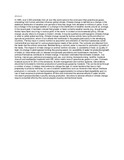| dc.description.abstract | In 1995, over 2,500 scientists from all over the world came to the conclusion that greenhouse gases emanating from human activities influence global climate. Climate change is defined as a change in the statistical distribution of weather over periods of time that range from decades to millions of years. It can be a change in the average weather or a change in the distribution of weather events around an average. In the recent past, it has been noticed that greater or fewer extreme weather events (e.g. droughts and floods) have been occurring in various parts of the world. In context of environmental policy, climate change usually refers to changes in
modern climate. It may be qualified as anthropogenic climate change or what is called global warming. Climate change caused by human activity has a profound effect on agricultural production, which in turn affects the livelihoods of the people particularly in the developing countries. The key issue in animal nutrition is acquisition and utilization of chemical substances called nutrients that are required for various physiological needs of the animal. The nutrients are obtained from the feeds that the animal consumes. Besides being a nutrient, water is required for production (growth) of the feeds. The impact of climate change on animal nutrition includes: (i) availability of feed; (ii) quality of feed; (iii) change in plant species forming the grazing sward; (iv) availability of water for production/growth of feeds; (v) heat stress and (vi) disease and parasite prevalence and transmission channels. The animals themselves contribute to climate change. It has been estimated that domestic livestock, rice farming, natural gas, petroleum processing and use, coal mining, biomass burning, landfills, livestock manure and wastewater treatment emit 350 million metric tons of greenhouse gases in a year. Domestic livestock account for 23% of the emissions. In both management and nutrition systems, interventions should be formulated to minimize production of greenhouse gases by livestock. This can be done through a number of ways: (i) dietary interventions to change the type of rumen bacteria that have a high propensity to produce methane; (ii) use of anabolic substances such as monensin that reduce methane production in ruminants; (iii) feed processing and supplementation to enhance feed digestibility and (iv) use of feed enzymes to promote digestion of fibre and minimized the adverse effects of water soluble non-starch polysaccharides in poultry and pig production. Solutions to adverse effects of climate change require concerted effort by the various players at policy and technical levels. | en_US |

